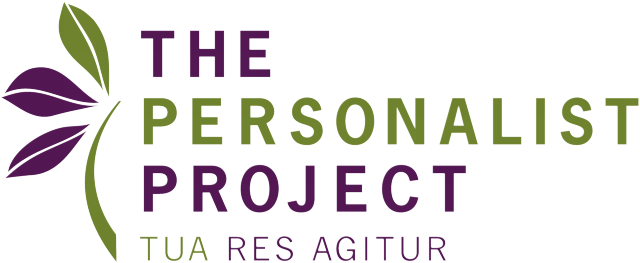Imposed vs Organic Identity: “The Sabbath is made for Man, not Man for the Sabbath”
Kate Whittaker Cousino | Nov 29, 2017
It's not difficult to see what makes intentional community attractive for young families. There's something very good and natural about desiring the company and community of those who share a faith and an identity. Yet my own experiences with second-generation members of these intentional communities suggests that there are particular challenges that come with raising children to adulthood in an intentional community.
(I don't want to come across as condemning these communities or the people who have chosen to invest their lives in them. However, I think that if they are to continue in a manner that respects the individual person, it's important to look at characteristic failings to address them or at the very least become aware of them.)
Intentional communities are nothing new. Religious orders are all intentional communities, and some, like the Augustinians, date back well over a millennia. Obviously, there is nothing fundamentally unstable about intentional community life.
Religious communities differ from newer forms of intentional community, however, in that they persist by attracting new adult members. These communities are founded on a charism that attracts people whose identity is already congruent with the community's mission and charism.
Even then, with time, a healthy religious order will see changes in how mission is understood and pursued over the lifetime of its members, and if there are real conflicts you'll see people leave or start new households or new orders.
This points to a weakness in the modern intentional community phenomenon, one common both to secular intentional communities--like The Farm in Tennessee--and "covenant communities" like Sword of the Spirit. While the first generation of any intentional community is composed of adults who are drawn to the mission statement or values of the community, things get complicated with the inclusion of children.
Personal identity normally changes and shifts in response to marriage and childbearing--and growing children have to be allowed to form their own sense of self. The strong sense of identity of the intentional or covenant community becomes a barrier to this normal process of family and individual growth.
This conflict is especially difficult on young adults growing up in the community, since the normal adolescent process of differentiation can look like a dangerous challenge to the community identity. Parents wind up in the position of either opposing the community's assertion of its identity--which at this point is very strongly tied to their own personal identities--or opposing their children's growth.
Older intentional communities, like the Amish, resolve this tension with the inclusion of points of choice--times when young men and women are given the chance to see and explore the world outside the community and choose to come home to full adult membership and conformity with community values, or leave to live elsewhere. (There's still some question about how free such a choice can be when leaving still means estrangement from friends and family, and when young people are sent out without the skills to make their way outside the community. That's too complex a question for this post, though!)
Of course, this conflict between individual, family, and community identity isn't unique to intentional communities. Organic communities, such as the ones that grow up around geographical areas or ethnic neighbourhoods, also develop strong senses of "who we are" that can be alienating or burdensome to young adults. The perennial popularity of the "coming of age" tale speaks to the universality of this process of individuation.
But if the community has organic roots that extend past the identity of values or lifestyle, it can withstand the shifts of generational change and growth by hearkening to more basic shared foundations--and relationships. In healthy organic communities and families, identity is always an expression of the actual persons within the community/family, arising out of similarities and differences, strengths and weaknesses, needs and gifts, as they interact with one another.
Fiddler on the Roof illustrates this with Tevye's slow acceptance of his daughters' increasing variance from the expected path laid out for young women in his community--from "tradition," that word for the accumulated expression and transmission of organic identity. In the end, not only does Tevye come to accept his daughters' choices--representative of their individual values and identities--but he--and his relationship with his wife, Golda--are also changed by them.
(And in the end, do these changes, this internalized sense of priorities that places relationships above tradition prepare Tevye and his family for the loss of their home, for the diaspora to come? We don't see how it plays out, but we are allowed to hope that this is the case.)
The challenge facing intentional communities is this: to give young men and women growing up within the community the room to be who they are without threatening their primary relationships. Will those who grow up within the community will be given a voice in shaping the mission and identity of the community? Is there room for them to have one foot in community and one foot in the wider world, as they explore their own potential and come to know themselves as individual persons?
